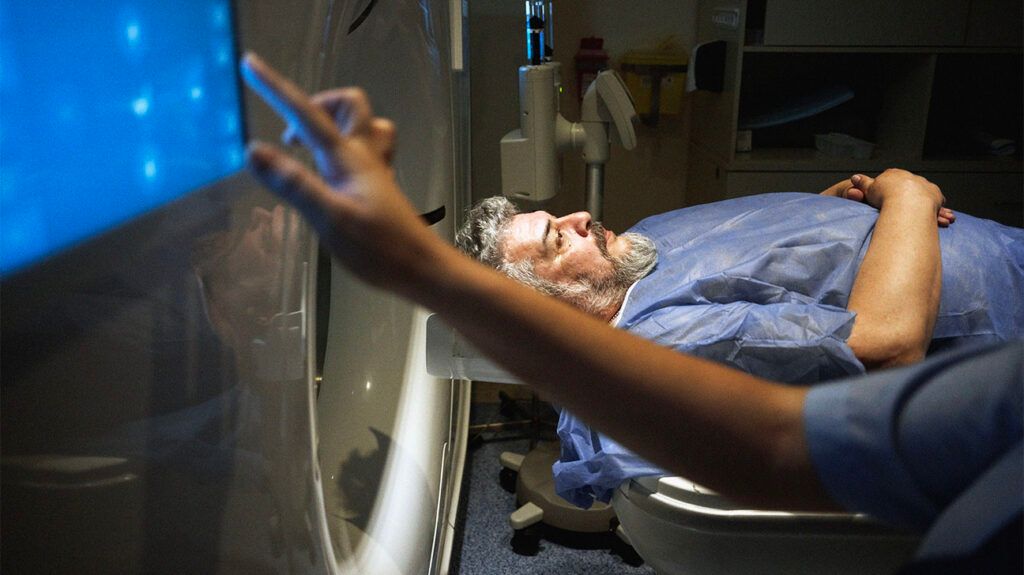Transthyretin amyloid cardiomyopathy (ATTR-CM) is a rare type of heart disease that can cause a thickening of the heart muscle. It may lead to heart failure.
ATTR-CM is typically underdiagnosed. The condition can occur when certain proteins in the blood do not form correctly and start to build up in the heart. This can cause symptoms such as shortness of breath and swelling in the legs and feet.
A note about sex and gender
Sex and gender exist on spectrums. This article will use the terms “male,” “female,” or both to refer to sex assigned at birth. Click here to learn more.

Transthyretin amyloid cardiomyopathy (ATTR-CM) is a rare type of heart muscle disease that
Transthyretin is a type of protein that the liver produces. The proteins circulate through the bloodstream to the rest of the body. When transthyretin proteins do not form correctly, they can convert into amyloid that deposits in the tissue of the heart muscle, known as the myocardium.
The buildup of misshapen proteins in the heart can lead to cardiomyopathy, a term that describes problems with the heart muscle.
The heart muscle can become thicker, stiffer, or larger than normal, which can prevent the heart from effectively pumping blood around the body.
There are two types of ATTR-CM. The
Hereditary ATTR-CM (hATTR-CM) can run in families. This type can occur when a person inherits a certain alteration of the transthyretin gene that can prevent transthyretin proteins from forming correctly.
In both types of ATTR-CM, the transthyretin proteins do not form in the typical way, which can cause them to build up in the heart.
There is no evidence to suggest a direct cause of ATTR-CM other than it being a potential part of the aging process or a person inheriting a gene mutation.
A 2023 article suggests that
Females may be more likely to develop hATTR-CM than wATTR-CM. According to a
A 2019 study suggests that a person is
ATTR-CM may be
In the United States, a person may be
ATTR-CM can be difficult to diagnose as it
The
Other symptoms can include:
- swollen legs and feet
- an increase in heart rate or changes in heart rhythm
- an irregular heartbeat
- heart palpitations
- coughing or wheezing
- bloating
A person with wATTR-CM may develop carpal tunnel syndrome, a condition that causes pressure on a nerve in the wrist. Symptoms can include pain, numbness, and tingling in the fingers and hands. People with wATTR-CM may also be more likely to develop an irregular heartbeat or a change in heart rhythm.
A person with hATTR-CM may experience pain, tingling, and numbness in the hands and feet.
Because ATTR-CM typically presents with similar symptoms to other heart conditions, diagnosis can be challenging.
The first line of testing a doctor may use when a person presents symptoms of ATTR-CM may be an electrocardiogram (ECG). However, a 2020 review refers to an older study suggesting that an ECG may only detect ATTR-CM in
Therefore, a doctor will typically recommend a combination of additional tests following an ECG. Some of these
- a transthoracic echocardiography, which is a type of ultrasound scan for the heart
- a cardiovascular magnetic resonance scan, which is a type of MRI scan for the heart
- a nuclear scan, which is the only type of imaging scan that can confirm an ATTR-CM diagnosis without the need for a biopsy
- genetic testing
- a biopsy of tissue from the heart, which may be the most accurate way of diagnosing ATTR-CM
The
Tafamidis can slow down the progression of ATTR-CM. However, it cannot reverse it. Also, tafamidis may only be effective if a person starts taking it early on in the development of ATTR-CM.
A person with ATTR-CM may consider a liver transplant. This can remove the gene alteration that produces transthyretin protein. However, this is only possible with hATTR-CM.
Other treatment options involve trying to manage symptoms of ATTR-CM to improve quality of life, such as:
- reducing sodium intake by following a low sodium diet and taking diuretic medication
- regulating heart rate by taking antiarrhythmic medication
- correcting an irregular heartbeat with a catheter ablation procedure, which involves applying tiny electrical currents to the heart muscle
Several other treatments for ATTR-CM are currently
A person with wATTR-CM may have an average survival rate of 3.5 years. However, this may depend on the stage of the condition. If a person receives a diagnosis in the early stages, the survival rate can be approximately 66 months (5.5 years).
A note on survival rates
A survival rate refers to the number of people who are still alive for a specific length of time after a particular diagnosis.
For example, a 5-year survival rate of 50% of people means that half of the people are still alive at least 5 years after diagnosis.
It is important to remember that these figures are estimates based on previous medical studies. Talk with your doctor about the outlook for your specific condition.
Transthyretin amyloid cardiomyopathy (ATTR-CM) is a rare type of heart disease with two forms. Wild-type ATTR-CM (wATTR-CM) typically develops when a person is over the age of 60 years and is more common in males. Hereditary ATTR-CM (hATTR-CM) can occur when a person inherits a certain gene variation.
The most common symptom of ATTR-CM is shortness of breath. Other symptoms can include swelling of the legs and feet, coughing, and wheezing.
A doctor may focus treatment on managing symptoms of ATTR-CM. The
Survival rates for ATTR-CM may vary depending on the type a person has. The average survival rate may be between 20 months and 3.5 years.
